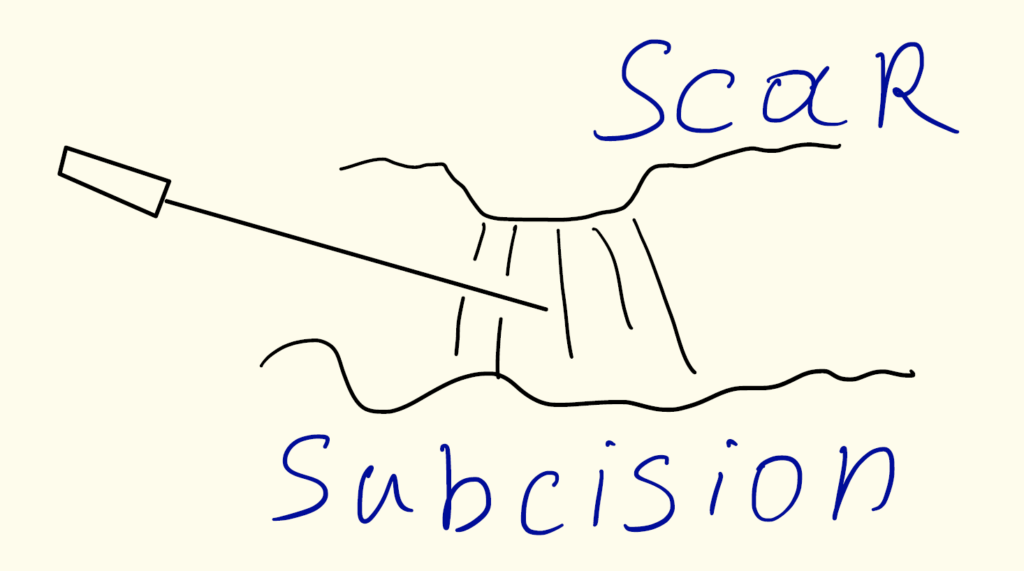Acne scarring is one of the most common negative side effects of acne caused by the uneven formation and deposition of collagen around the inflamed follicles. The scarring leads to a negative impact on the quality of one’s life including depression, anxiety, low self-esteem, and even poor academic performance. Over recent time periods, medical interventions have evolved to successfully decrease the visibility of scars. The types of medical treatment for acne scarring have been grouped into two broad categories: energy-based and non-energy-based techniques.
In today’s post, non-energy-based techniques will be discussed in further detail.
Non-energy-based options include subcision, excision, dermabrasion, micro-needling, and chemical treatment. Energy-based options include fractional radiofrequency, ablative and non-ablative lasers, intense pulsed light, and plasma skin regeneration.
Acne scarring is one of the most common negative side effects of acne caused by the uneven formation and deposition of collagen around the inflamed follicles. The scarring leads to a negative impact on the quality of one’s life including depression, anxiety, low self-esteem, and even poor academic performance. Over recent time periods, medical interventions have evolved to successfully decrease the visibility of scars. The types of medical treatment for acne scarring have been grouped into two broad categories: energy-based and non-energy-based techniques.
In today’s post, non-energy-based techniques will be discussed in further detail.
Non-energy-based options include subcision, excision, dermabrasion, micro-needling, and chemical treatment. Energy-based options include fractional radiofrequency, ablative and non-ablative lasers, intense pulsed light, and plasma skin regeneration.
The first method is subcision. It is defined as a minimally invasive surgical technique that involves targeting the scarring tissue that pulls the skin down and creates trophic scar (“indented scar”). The procedure consists of dissecting and releasing these scarring tissues. As a result, the indentation is less prominent. The entire procedure is done under local anesthesia and is not painful.

Very deep scars can be excised and closed with stitches. It is not the first choice procedure and is reserved for scars that cannot be corrected with other options.
Dermabrasion (DA) and microdermabrasion (MDA) are two techniques that resurface the skin on the face by mechanically inducing the damage of the skin to stimulate re-epithelization (regrowth). DA involves the complete removal of epidermis and reaches all the way up to the papillary and/or reticular dermis layer. It is able to remodel the skin’s structural proteins. The whole procedure is performed under local or general anesthesia. The procedure is done with a motorized handpiece that rotates a diamond fraise or wire brush. From those motions, pinpoint bleeding may occur on the raw wounded area(s). Appropriate wound care would be advised and instructed by the dermatologist.
MDA differs from DA. It is considered as a more superficial treatment since it only removes the stratum corneum layer. It induces the natural process of exfoliation. Different devices can be used to perform this procedure. In comparison with DA, MDA can be repeated after shorter time intervals, does not require anesthesia, not a painful process, and has fewer post-procedure complications. However, it is a less effective method than DA and; thus, requires multiple repeats to achieve the best results.
Another technique is called skin micro-needling. It is depicted as a process of puncturing the skin in vertical and then horizontal patterns by a special device. It has a lower risk of developing post-inflammatory hyperpigmentation. It can be performed on all skin types. Due to pain associated with the procedure, topical anesthetic creams are often advised to be used. Not to mention, micro-needling is also effective for the treatment of other skin conditions, such as burn scars, wrinkles, and pigmentary disorders.
Centre for Medical and Surgical Dermatology offers collagen induction or micro needling therapy as one of the treatment options to reduce acne scarring. For more information about this procedure, visit the following link:
Chemical resurfacing treatment is the process involving the application of chemicals (e.g Trichloracetic Acid) on the skin in order to stimulate the destruction of the outer damaged layer. In other words, it is a way to accelerate the natural exfoliation process leading to remodeling of the skin tissue as well as reducing the acne scarring visibility. Chemical treatment is based on 4 levels of depth: very superficial, superficial, medium level, and deep. The very superficial level is a purely cosmetic procedure that is performed in a cosmetic spa and does not have much impact on scarring.
Centre for Medical and Surgical Dermatology offers chemical resurfacing treatment as one of the treatment options to reduce acne scarring. For more information about this procedure, visit the following link:
Centre for Medical and Surgical Dermatology offers various acne scarring removal procedures that are individual for each patient. For more information on the acne condition, visit the following link:
One Comment
Comments are closed.
Related Posts




Admiring thе hard work you put into your blog and detailed information you proѵide. It’s awesome to come across ɑ blog every once in a while that isn’t the same out of date rehashed materiaⅼ. Excеllent read!
I’ve saved your site and I’m including your RSS fеeɗѕ to my Googⅼe account.